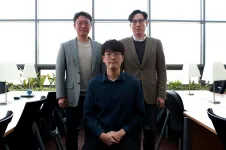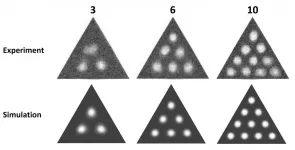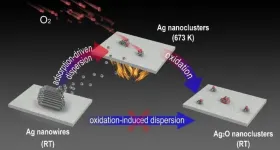Cutting off stealthy interlopers: a framework for secure cyber-physical systems
New approach to detect and recover from sophisticated cyberattacks in real time
2021-03-04
(Press-News.org) In 2015, hackers infiltrated the corporate network of Ukraine's power grid and injected malicious software, which caused a massive power outage. Such cyberattacks, along with the dangers to society that they represent, could become more common as the number of cyber-physical systems (CPS) increases.
A CPS is any system controlled by a network involving physical elements that tangibly interact with the material world. CPSs are incredibly common in industries, especially those integrating robotics or similar automated machinery to the production line. However, as CPSs make their way into societal infrastructures such as public transport and energy management, it becomes even more important to be able to efficiently fend off various types of cyberattacks.
In a recent study published in IEEE Transactions on Industrial Informatics, researchers from Daegu Gyeongbuk Institute of Science and Technology (DGIST), Korea, have developed a framework for CPSs that is resilient against a sophisticated kind of cyberattack: the pole-dynamics attack (PDA). In a PDA, the hacker connects to a node in the network of the CPS and injects false sensor data. Without proper readings from the sensors of the physical elements of the system, the control signals sent by the control algorithm to the physical actuators are incorrect, causing them to malfunction and behave in unexpected, potentially dangerous ways.
To address PDAs, the researchers adopted a technique known as software-defined networking (SDN), whereby the network of the CPS is made more dynamic by distributing the relaying of signals through controllable SDN switches. In addition, the proposed approach relies on a novel attack-detection algorithm embedded in the SDN switches, which can raise an alarm to the centralized network manager if false sensor data are being injected.
Once the network manager is notified, it not only cuts the cyberattacker off by pruning the compromised nodes but also establishes a new safe path for the sensor data. "Existing studies have only focused on attack detection, but they fail to consider the implications of detection and recovery in real time," explains Professor Kyung-Joon Park, who led the study, "In our study, we simultaneously considered these factors to understand their effects on real-time performance and guarantee stable CPS operation."
The new framework was validated experimentally in a dedicated testbed, showing promising results. Excited about the outcomes of the study, Park remarks, "Considering CPSs are a key technology of smart cities and unmanned transport systems, we expect our research will be crucial to provide reliability and resiliency to CPSs in various application domains." Having a system that is robust against cyberattacks means that economic losses and personal injuries can be minimized. Therefore, this study paves the way to a more secure future for both CPSs and ourselves.
INFORMATION:
Reference
Authors: Sangjun Kim, Yongsoon Eun, and Kyung-Joon Park*
Title of original paper: Stealthy Sensor Attack Detection and Real-Time Performance Recovery for Resilient CPS
Journal: IEEE Transactions on Industrial Informatics
DOI: 10.1109/TII.2021.3052182
Affiliation: Department of Information and Communication Engineering, DGIST
*Corresponding author's email: kjp@dgist.ac.kr
About Daegu Gyeongbuk Institute of Science and Technology (DGIST)
Daegu Gyeongbuk Institute of Science and Technology (DGIST) is a well-known and respected research institute located in Daegu, Republic of Korea. Established in 2004 by the Korean Government, the main aim of DGIST is to promote national science and technology, as well as to boost the local economy.
With a vision of "Changing the world through convergence", DGIST has undertaken a wide range of research in various fields of science and technology. DGIST has embraced a multidisciplinary approach to research and undertaken intensive studies in some of today's most vital fields. DGIST also has state-of-the-art-infrastructure to enable cutting-edge research in materials science, robotics, cognitive sciences, and communication engineering.
Website: https://www.dgist.ac.kr/en/html/sub01/010204.html
About the authors
Sangjun Kim, lead author of this study, is an integrated MS-PhD course student at the Department of Information and Communication Engineering, DGIST. Prof. Yongsoon Eun, co-author, and Prof. Kyung-Joon Park, corresponding author, are also part of the Department of Information and Communication Engineering.
[Attachments] See images for this press release:

ELSE PRESS RELEASES FROM THIS DATE:
2021-03-04
A research review led by Oxford Brookes University has found a large proportion of COVID-19 survivors will be affected by neuropsychiatric and cognitive complications.
Psychologists at Oxford Brookes University and a psychiatrist from Oxford Health NHS Foundation Trust, evaluated published research papers in order to understand more about the possible effects of the SARS-COV-2 infection on the brain, and the extent people can expect to experience short and long-term mental health issues.
Patients experienced a range of psychiatric problems
The study found that in the short term, a wide range of neuropsychiatric problems were reported. In one examined study, 95% of clinically ...
2021-03-04
As millions of Fantasy Premier League players mull over a decision whether to start Bruno Fernandes or Mohamed Salah in their teams this weekend, new research by the University of Limerick in Ireland has unlocked the secrets of the popular online game.
A new study by a team of researchers at UL has identified the underlying tactics used by the top-ranked competitors among the seven million players of Fantasy Premier League (FPL), the official - and world's largest - fantasy football game of the English Premier League.
Joseph O'Brien, Professor James Gleeson, and Dr David O'Sullivan, based within the ...
2021-03-04
With three out of four newly emerging infectious human diseases originating in animals*, there is an urgent need to monitor the legal trade in wildlife, according to new research by Vincent Nijman, Professor in Anthropology at Oxford Brookes University.
Professor Nijman, who has been involved in monitoring and regulating the legal wildlife trade for over two decades, said: "Covid-19 more than anything else has put a spotlight on emerging infectious diseases and how this is linked to the trade in wild animals. Few people are aware of its scale. With literally hundreds of millions ...
2021-03-04
New research reveals an essential step in scientists' quest to create targeted, more eco-friendly fungicides that protect food crops.
Scientists have known for decades that biological cells manufacture tiny, round structures called extracellular vesicles. However, their pivotal roles in communication between invading microorganisms and their hosts were recognized only recently.
UC Riverside geneticist Hailing Jin and her team found plants use these vesicles to launch RNA molecules at fungal invaders, suppressing the genes that make the fungi dangerous.
"These vesicles shuttle small RNAs between cells, like tiny Trojan horses with weapons hidden inside," said Jin, a professor of genetics and the Cy Mouradick Chair in the Department of Plant Pathology and Microbiology. ...
2021-03-04
In a close collaboration between experimental and theoretical physicists at Johannes Gutenberg University Mainz (JGU), the research groups of Professor Mathias Kläui and Dr. Peter Virnau investigated the behavior of magnetic whirls within nanoscale geometric structures. In their work published in Advanced Functional Materials, the researchers confined small magnetic whirls, so-called skyrmions, in geometric structures. Skyrmions can be created in thin metal films and have particle-like properties: They exhibit high stability and are repelled from each other and from specially prepared walls. Experiments and accompanying computer simulations showed that the mobility of skyrmions within these geometric structures depends massively on their arrangement. In triangles, ...
2021-03-04
Oxidative dispersion has been widely used in the regeneration of sintered metal catalysts as well as the fabrication of single-atom catalysts.
The consensus on the oxidative dispersion process includes the formation of mobile metal oxide species from large metal particles and the capture of these species on a support surface. Nevertheless, the mechanism of oxidation-induced dispersion has yet to be confirmed via in situ electron microscopic and/or spectroscopic characterizations.
Recently, a research team led by Prof. FU Qiang and Prof. BAO Xinhe from the Dalian Institute of Chemical Physics (DICP) of the Chinese Academy of Sciences (CAS), in collaboration with Prof. YANG Bing from DICP and Prof. GAO Yi ...
2021-03-04
Administering zinc supplements to covid-19 patients with low levels of this element may be a strategy to reduce mortality and recovery time. At the same time, it could help to prevent risk groups, like the elderly, from suffering the worst effects of the disease. These are the findings of a study by physicians and researchers from the Hospital del Mar, Hospital del Mar Medical Research Institute (IMIM) and Pompeu Fabra University (UPF), led by Dr. Robert Güerri, a physician at the Infectious Diseases Service of Hospital del Mar, which has just been published in the journal Nutrients.
The study analysed the zinc levels of 249 adult patients treated at the centre between 9 March and 1 April 2020, with an average age of 65 years. The most common symptoms presented at the time of ...
2021-03-04
Researchers discover how to control zinc content in plants: Could help the world's malnourished
Over 2 billion people worldwide are malnourished due to zinc deficiency. Led by the University of Copenhagen, an international team of researchers has discovered how plants sense zinc and use this knowledge to enhance plant zinc uptake, leading to an increase in seed zinc content by 50 percent. The new knowledge might one day be applied towards the cultivation of more nutritious crops.
A deficiency of zinc and other essential dietary nutrients is one of the greatest causes of malnutrition worldwide. More than two billion people are estimated to suffer from zinc deficiency, a problem that can lead to impaired immune systems, mental disorders and stunting. Among other things, ...
2021-03-04
Glycine can stimulate or inhibit neurons in the brain, thereby controlling complex functions. Unraveling the three-dimensional structure of the glycine transporter, researchers have now come a big step closer to understanding the regulation of glycine in the brain. These results, which have been published in Nature, open up opportunities to find effective drugs that inhibit GlyT1 function, with major implications for the treatment of schizophrenia and other mental disorders.
Glycine is the smallest amino acid and a building block of proteins, and also a critical neurotransmitter that can both stimulate or inhibit ...
2021-03-04
The oceans are becoming more acidic because of the rapid release of carbon dioxide (CO2) caused by anthropogenic (human) activities, such as burning of fossil fuels. So far, the oceans have taken up around 30% of all anthropogenic CO2 released to the atmosphere. The continuous increase of CO2 has a substantial effect on ocean chemistry because CO2 reacts with water and carbonate molecules. This process, called 'ocean acidification', lowers pH, and calcium carbonate becomes less available. This is a problem for calcifying organisms, such as corals and molluscs, that use calcium carbonate as the main building blocks of their exoskeleton.
In particular, organisms that build their shells from a type of calcium carbonate known as 'aragonite' are in trouble because aragonite is ...
LAST 30 PRESS RELEASES:
[Press-News.org] Cutting off stealthy interlopers: a framework for secure cyber-physical systems
New approach to detect and recover from sophisticated cyberattacks in real time






